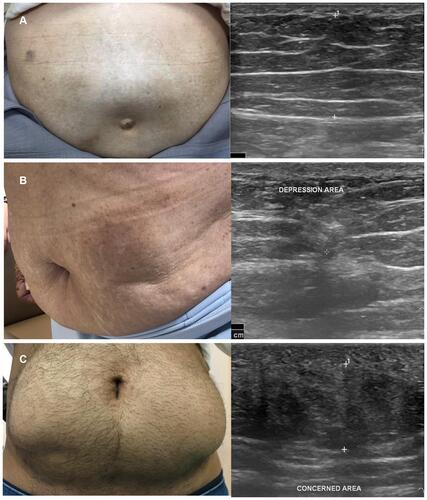Figures & data
Table 1 Demographic Data of Studied Participants (N=400)
Table 2 The Details of Insulin Regimens and Injection Techniques in Studied Participants
Table 3 Comparison of Clinical Parameters and Glycemic Control in Patients with and without Insulin-Induced Lipohypertrophy
Table 4 Factors Associated with the Presence of Insulin-Induced Lipohypertrophy
Figure 1 (A) The overall prevalence of insulin-induced lipohypertrophy and prevalence stratified by type of diabetes and duration of insulin treatment. (B) The prevalence of insulin-induced lipohypertrophy in people with long-standing (≥10 years) DM and prevalence stratified by type of diabetes.

Figure 2 (A) A typical insulin-induced lipohypertrophy in T2DM patient with ultrasound characteristics of thickening heterogeneous echogenicity of subcutaneous fat. (B) Insulin-induced lipoatrophy in a patient with long-standing T2DM with ultrasonographic findings of lipoatrophy revealed a focal area of decreased thickness and increased heterogeneous echogenicity of subcutaneous fat texture. (C) A T1DM patient with suspected insulin-derived localized amyloidosis based on palpable subcutaneous mass at subumbilical region and homogeneous hypoechoic fat interspersed from ultrasound.


